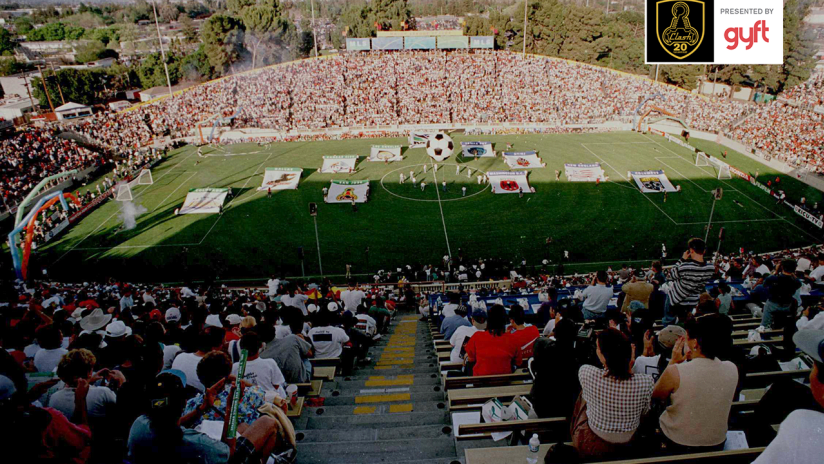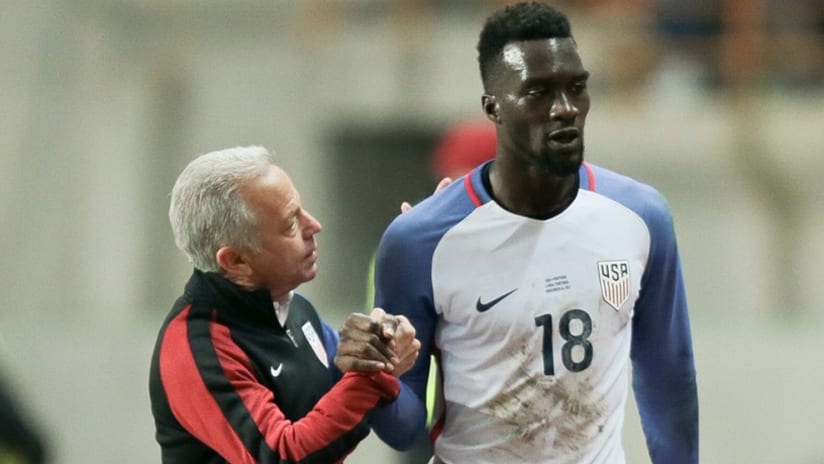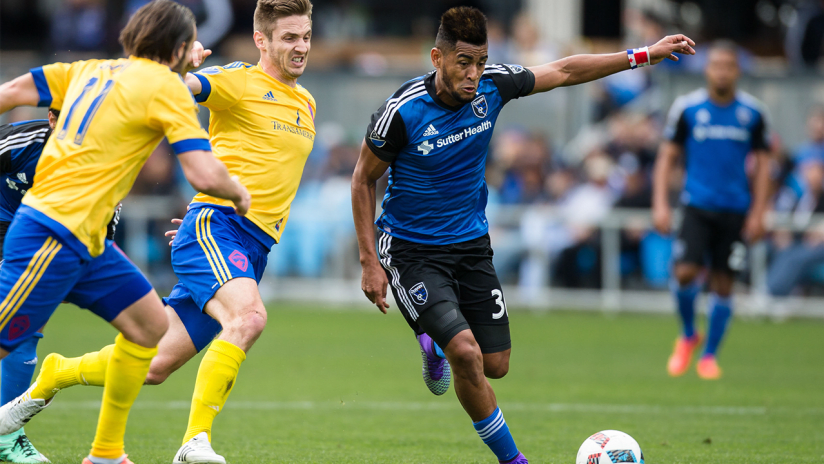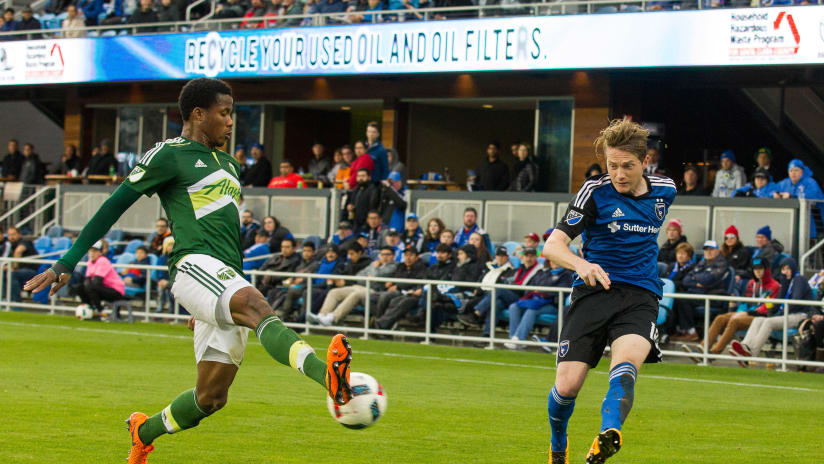Major League Soccer was born in 1988 when the United States Soccer Federation pledged to create a top professional soccer league as a condition to FIFA awarding the 1994 FIFA World Cup to the U.S. After years of planning, the league was founded in 1995, with the expectation of beginning play the following year.
On January 5, 1995, Major League Soccer held their Inaugural Allocations, signing ‘marquee’ players and distributing four to each of the 10 clubs. In these allocations, San Jose was awarded John Doyle, Michael Emenalo, Eric Wynalda and Ben Iroha. Tab Ramos was the first player distributed, heading to the NY/NJ Metrostars, later joined by players such as Jeff Agoos (D.C. United), Dominic Kinnear (Colorado Rapids), Alexi Lalas (New England Revolution) and Roy Lassiter (Tampa Bay Mutiny). In total, 23 of the 40 players distributed were American, proving the value of local talent available. American-born or raised players that chose to ply their craft here in MLS as opposed to South America or Europe helped pave the way for future superstars to come aboard.
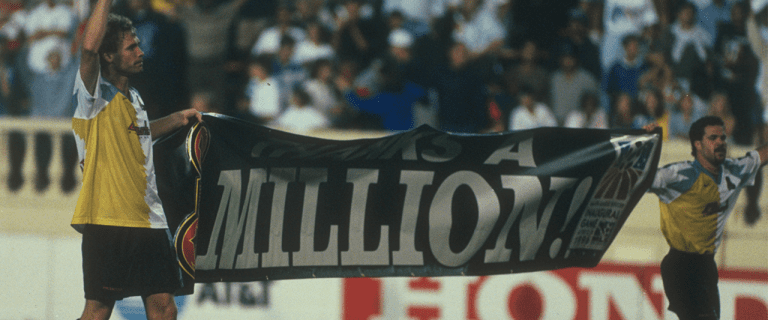
Rosters were then filled out through the 1996 MLS Inaugural Player Draft, which was largely decided by performances at a pre-draft combine. Most of the players taken in the draft were selected from smaller leagues throughout the country, including the American Professional Soccer League, the United Soccer League and the United States Indoor Soccer League. U.S. international forward Brian McBride, who then played for Wolfsburg in Germany, was the first overall selection by the Columbus Crew. San Jose selected midfielder Paul Bravo with their first selection and he wound up leading the club with 13 goals during the inaugural season. The draft was largely a crapshoot, with most players selected having very little scouting done of them, if any.
Once teams were assembled, the next step was to ensure the product on the field was of good quality. The teams didn’t have proper training facilities and played their matches in football stadiums. The inaugural match in San Jose between the Clash and D.C. United was broadcast on ESPN, and league executives were worried that the first match had to provide a spark in order to generate momentum for the league to continue to grow. Late in the game, neither team had scored and it seemed as though it would be heading for a dreary 0-0 draw through the end of regulation. But then Clash forward Eric Wynalda provided a stroke of genius, crossing up D.C. defender Jeff Agoos and burying his shot inside the far post. Agoos later joked that he saved Major League Soccer by allowing the goal to happen.
All in all, the league broadcast 35 games nationally on ESPN and ESPN2. At the time, it was respectable, with roughly one in five games being aired for the nation to see. Today, the league’s TV deals are booming, with 34 games on the ESPN networks, 28 on UniMas, 30 on FOX Sports 1 and four more on FOX, with broadcasts distributed to more than 140 nations worldwide.
Since 1996, the league has doubled the amount of teams that compete, while adding three Canadian sides, soccer-specific stadiums are being built across the country, attendance figures are up and MLS is profitable after years of financial instability. American players continue to be the bulk of the league, with U.S. internationals such as Quakes forward Chris Wondolowski, Sounders FC striker Clint Dempsey and Sporting KC defender Matt Besler leading the way. The league is now also chalk full of international superstars like Brazilian midfielder Kaka, Italian playmaker Sebastian Giovinco and Irish goal-scorer Robbie Keane. With today’s quality of facilities and revenues being generated that can support salaries comparable with leagues around the world, MLS is now a destination for global soccer icons.
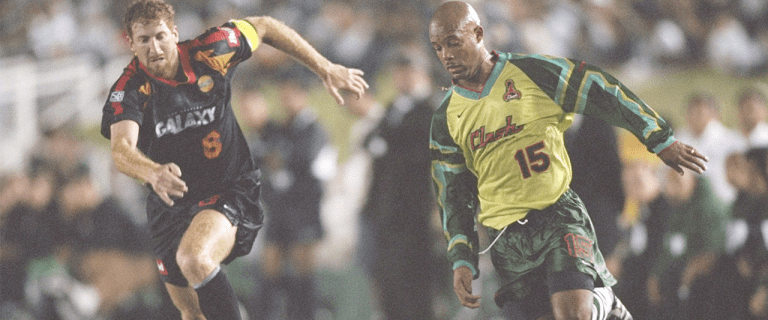
San Jose is the perfect example of how far the league has come in 20 years. Originally playing in Spartan Stadium on the campus of the San Jose State University, the Earthquakes now own their own home, Avaya Stadium, which is among the best soccer-specific stadiums in the nation. Spartan Stadium was adequate in both field conditions and seating capabilities, but lacked key features and a true Quakes identity, since after all, they were just renting. Avaya Stadium now encompasses the entire Earthquakes organization and facilities, with the front office building and training field on-site. The venue has also been selected to host the 2016 MLS All-Star Game and has already hosted Manchester United for a weeklong stay last summer.

